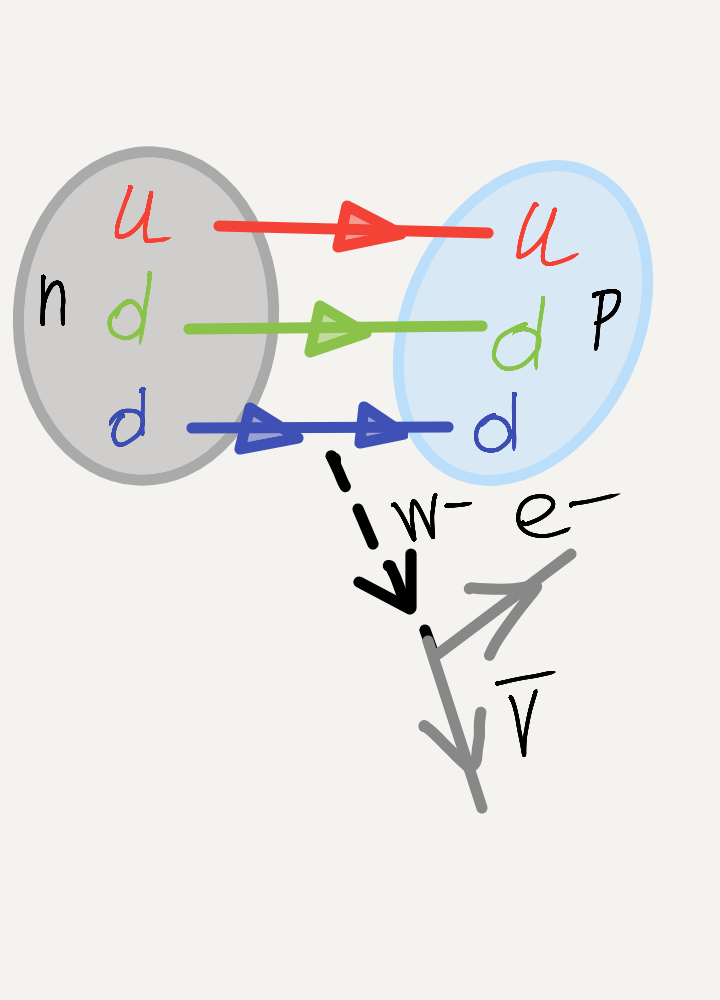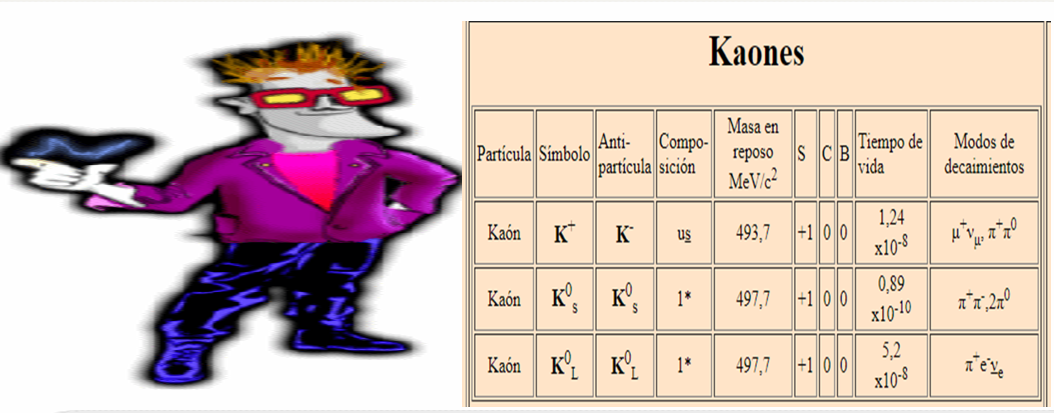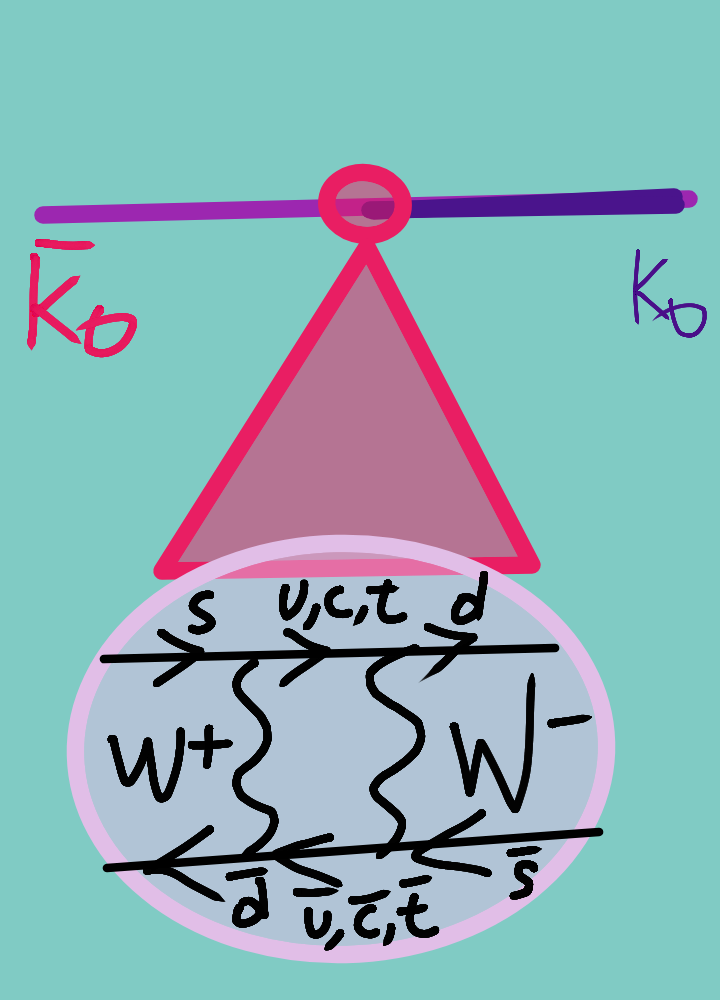¿What do you know about kaons?
Introduction
Back in the field of physics, to get well into the content of kaons, it is important to science-loving colleagues to know the following about particles, where this can be is a small object or body in which it has physical properties or chemical in which reference is made to its volume, density or mass. What makes it unique is the large size range in which it can be seen within the different phenomena within the field of physics, since particles can be found in which the electron, protons, and neutrons refer.
A very curious fact that thanks to the study of particles in this microscopic and small or quantum world, has served as a basis to study the stars and celestial bodies of the universe, we cannot forget the great contribution of: Max Planck, Albert Einstein, Niels Bohr gave the basis for the conceptualization formulation what we know today in our era quantum mechanics, since a common particle came to define the phenomenon of the photoelectric effect, so power scientifically demonstrates the quantum nature of light in such a way, as it was its behavior in reference to the interaction with matter. Within the field of physics we have particle physics, which is the branch of physics that studies the elemental components of matter and also the interactions between them.

In this representation, in a simple and dynamic way, he shows us the Feynman Diagram of a beta decay, a process by which a neutron can become a proton, where one of the three quarks of the neutron on the left (quark d in blue) emits a W- particle, becoming a quark (u); the emitted particle (W-) decays into an antineutrino and an electron.
Kaon
Within the particle world we have the Kaon so that those who did not know it, that is because it is part of elementary particles, in which it corresponds to the group of mesons, and this is formed by a pair of quark, where thanks to the disintegration of the kaon can occur two or three pions. The meson family consists of a quark-antiquark pair.
It has practically become a branch of experimental particle physics, there are electrically charged kaons, quark up combinations with strange quarks, but these are not useful for our purposes; Although we omit the neutral for the sake of simplicity, we will always be referring to the neutral kaons. Information consulted in From eternity to today: In search of the definitive theory of time By Sean Carroll, 2015.
That is why kaons have been shown that they do not have a great direct effect on what we observe, it also has the particularity that not too long, that is why as part of their uniqueness of their property in which less than half of the mass of a proton, is part of the strangeness particle, since it is possible to demonstrate by means of a test test, by means of a strong nuclear interaction between the pion and the proton it produces, in a very short time in only about 10 high (- 23) seconds, just a reader friend, a couple of kaons showed a behavior in which they are thrown in different directions; what served over time to discover that within this world of particles in which the quark model is established, what makes it more fascinating is that it would include a quark that precisely confers this property, the strange strange quark, which was verified that the kaons possess.
Properties
[A] -A charge level a negatively charged kaon K- with the combination of a strange quark and an antiquark above.
[B] - At the charge level, a kaon where its antiparticle is positively charged K +, by the combination of a quark above and a strange antiquark, it is evident from the difference when it is negatively charged, in addition to this, it also thanks to the CPT invariance the one evidenced to have a mass and half-life identical to that of K-.
[C] - At level a neutral charge K0 by the combination of a down quark and a strange antiquark.
[D] - At the particle level it has antiparticle characteristics, in which it contains a strange quark and an antiquark below, where it is evidenced with the same mass.
[1] - Pions and Kaones are more frequent particles produced in accelerators, their composition in quarks is π- [ūd], K- [ūs], and both have zero spin. Its electric charge is that of the electron and its mass is m π ± = 139.6mev / c2 and mk2 ± = 493.7 mev / c2, there are also neutral modes with mass: m π0 = 134.9 mev / c2.
[2] - In accelerators the ultrarelativistic π ± and k ± (E π, k ≥ Gev), are penetrating particles (not as much as the muon, but much more than electrons and photons), being able to pass through layers of materials of considerable thickness ( detectors or absorbers). So far no applications are known. Information consulted in The theory of electroweak unification: Course in nine lessons By Bernardo Adeva Andany, 2017.

As ours in the table shows us the different characteristics and properties of the Kaons, in addition to this we also have the following: very valuable information within this same order of idea, where the neutral Kaons K0s and K0L evidenced that there are mixtures symmetrical, which in turn is antisymmetric, which is most unique in the particle world for the combinations of down-antistrange and antidown-strange quarks. At the charge level, the charged kaons are mesons, which have an up-antistrange quark composition in the west, which is exclusively positive, and anti-strange in the negative kaon.

A representation of two different K-mesons, with different strangeness load, can be interconverted through the weak interaction, since this interaction does not preserve the strangeness.
If invariance is violated under temporary investment, one process can be expected to take a little longer than the other; consequently on average in our set of particles, there would be a slightly greater number of kaons than antikaons or vice versa.Information consulted in From eternity to today: In search of the definitive theory of time By Sean Carroll, 2015.

1- From eternity to today: In search of the definitive theory of time By Sean Carroll, 2015.
2 - The theory of electroweak unification: Course in nine lessons By Bernardo Adeva Andany, 2017.

Thanks for your contribution to the STEMsocial community. Feel free to join us on discord to get to know the rest of us!
Please consider supporting our funding proposal, approving our witness (@stem.witness) or delegating to the @stemsocial account (for some ROI).
Please consider using the STEMsocial app app and including @stemsocial as a beneficiary to get a stronger support.
Thank you for your valuable support @steemstem